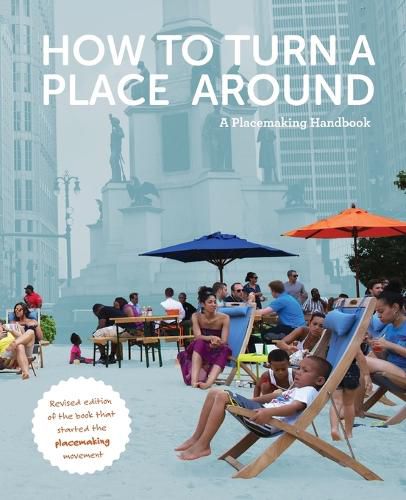Readings Newsletter
Become a Readings Member to make your shopping experience even easier.
Sign in or sign up for free!
You’re not far away from qualifying for FREE standard shipping within Australia
You’ve qualified for FREE standard shipping within Australia
The cart is loading…






This title is printed to order. This book may have been self-published. If so, we cannot guarantee the quality of the content. In the main most books will have gone through the editing process however some may not. We therefore suggest that you be aware of this before ordering this book. If in doubt check either the author or publisher’s details as we are unable to accept any returns unless they are faulty. Please contact us if you have any questions.
How to Turn a Place Around is a user-friendly, common sense guide for everyone from community residents to mayors on how to create successful places. The ideas presented in this book reflect over 40 years of Project for Public Spaces experience helping people understand and improve their public spaces. The book illustrates a community-based, place-oriented process organized around eleven basic principles for creating successful public spaces, as well as methods that anyone can use to evaluate a space.
People who read this handbook will learn how short-term actions and visible changes can lead to better public spaces in their own communities. Through examples of people’s experiences in other cities, Project for Public Spaces demonstrates that, with an understanding of how a place works, any place can be turned around.
In the final section of the book, tools such as observations and surveys are described in a simple, how-to manner that will help citizens get all the information they need to understand why some spaces are successful and why some are not. It also provides steps to help the reader lead a community-based visioning process and begin to improve their neighborhood.
Expanded Second Edition: When it was first released in 2000, this user-friendly guidebook helped launch the placemaking movement. Along with a brand new design and vibrant color photos, this second edition adds new tools, like the Power of 10 exercise and Place Performance Game ; inspiring new case studies; and a more comprehensive section on how to run a successful placemaking process, from community engagement to creating a vision to implementation.
$9.00 standard shipping within Australia
FREE standard shipping within Australia for orders over $100.00
Express & International shipping calculated at checkout
This title is printed to order. This book may have been self-published. If so, we cannot guarantee the quality of the content. In the main most books will have gone through the editing process however some may not. We therefore suggest that you be aware of this before ordering this book. If in doubt check either the author or publisher’s details as we are unable to accept any returns unless they are faulty. Please contact us if you have any questions.
How to Turn a Place Around is a user-friendly, common sense guide for everyone from community residents to mayors on how to create successful places. The ideas presented in this book reflect over 40 years of Project for Public Spaces experience helping people understand and improve their public spaces. The book illustrates a community-based, place-oriented process organized around eleven basic principles for creating successful public spaces, as well as methods that anyone can use to evaluate a space.
People who read this handbook will learn how short-term actions and visible changes can lead to better public spaces in their own communities. Through examples of people’s experiences in other cities, Project for Public Spaces demonstrates that, with an understanding of how a place works, any place can be turned around.
In the final section of the book, tools such as observations and surveys are described in a simple, how-to manner that will help citizens get all the information they need to understand why some spaces are successful and why some are not. It also provides steps to help the reader lead a community-based visioning process and begin to improve their neighborhood.
Expanded Second Edition: When it was first released in 2000, this user-friendly guidebook helped launch the placemaking movement. Along with a brand new design and vibrant color photos, this second edition adds new tools, like the Power of 10 exercise and Place Performance Game ; inspiring new case studies; and a more comprehensive section on how to run a successful placemaking process, from community engagement to creating a vision to implementation.